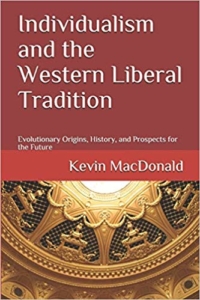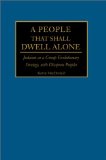
My attention was recently drawn to a critical review of two of the essays that appear in my book Battle Lines: Essays on Western Culture, Jewish Influence, and Anti-Semitism (which, probably not coincidentally, was recently banned by Amazon). This review was penned by art writer and dealer Francis M. Naumann in the online and print journal The Brooklyn Rail. This website and publication claim to “provide an independent forum for arts, culture, and politics throughout New York City and far beyond.” The ideological tenor of The Brooklyn Rail is captured in the banner across the top of the website’s homepage which declares “Black Lives Matter. We stand in solidarity with those affected by generations of structural violence.” Readers will be shocked to learn that individuals with common Jewish names feature very prominently among the contributors to this journal.
Naumann, who is not Jewish, offers a review replete with ad hominem and straw man arguments, and nit-picking, inconsequential argumentation. Unable to debunk the central thesis of either essay, he resorts to ascribing malign motives and psychological imbalances to myself and Professor MacDonald. In his review, Naumann deploys the standard rhetorical devices arrayed against those critical of Jewish influence, or who just stand up for White interests: the tendentious terms “white supremacist” and “conspiracy” featuring prominently. He claims Kevin MacDonald is “accurately described” in his Wikipedia entry as “an American anti-Semitic conspiracy theorist” and “white supremacist.” Naumann, who doubtless has never actually read any of MacDonald’s academic work, claims this description is validated by MacDonald’s simple statement of fact in his foreword to Battle Lines that: “We simply can’t avoid discussing the Jews. Honest discussions of Jewish influence are absolutely necessary if White people are going to have a future.”
Naumann’s apparent a priori assumption is that Jewish influence on Western societies and culture is necessarily benevolent, and that, consequently, any criticism of this influence is inherently invalid and reflects negatively on the psychological health of the critic (hence the title of his review, “Pure Meshuggah: Anti-Semitism Invades Art History” with “Meshuggah” being the Yiddish word for crazy). This kind of illogic and intellectual dishonesty spills over into his discussion of my work.
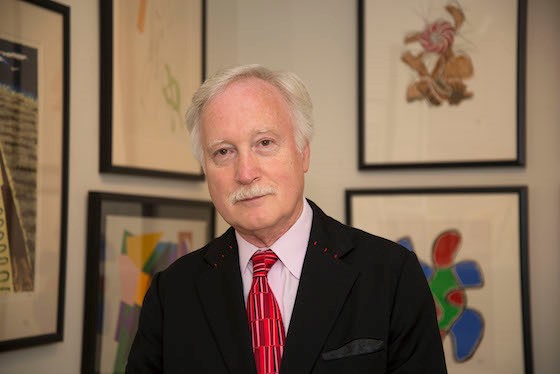
Francis M. Naumann
In my essay entitled “Tristan Tzara and the Jewish Roots of Dada,” I argue that the Jewish origins and identities of prominent figures in the Dada movement (c. 1916–1924), and particularly of its founder, Tristan Tzara (born Samuel Rosenstock), were critical in shaping its intellectual tenor as a movement arrayed against every cultural tradition of the European past, including rationality itself. I describe Dada’s destructive influence in feeding into the conceptual art that has blighted Western art since the 1960s. I also note the conceptual parallels between Dada and the deconstruction of the Jewish poststructuralist intellectual Jacques Derrida. Both attempted to foster subjective individualism to disconnect Europeans from their familial, religious and ethnic bonds—reducing the salience of Jews as an outgroup and, consequently, the prevalence of anti-Semitism in Western societies.
Offering no real counter-arguments (or critical analysis of my sources), Naumann summarily dismisses this as a “conspiracy theory,” claiming that “Sanderson casts aside logic and reasoning in order to convince us that what he is saying is true.” While a prominent Israeli art historian admitted my essay “is well written and excellently researched” and from an “academic research viewpoint it is without reproach,” Naumann eschews any pretensions to objective analysis and resorts to amateur psychoanalysis. He proposes that my thesis reflects “Sanderson’s fear of the intellectual achievement of these Jewish writers; for like Hitler before him, the exceptional intelligence and success of so many Jews in all professions clearly terrifies him and threatens to undermine his painfully flawed illusion of white supremacy.” Naumann here unintentionally confesses to an ideologically-problematic (for him) strain of race realism: accepting that certain ethnic groups possess “exceptional intelligence” and thus achieve more than others. He is, however, unable to cite a single sentence from Battle Lines that demonstrates my alleged belief in “white supremacy.”
Appalled that anyone would draw negative conclusions about the influence of Dada, which he calls “a playful movement,” or of the Jews who dominated the movement, Naumann insists that “The revolutionary spirit that fueled Dada and abstract art has continued to affect the course of contemporary art, to the good fortune of all reasonable and sentient people.” In addition to being neither reasonable nor sentient, this author is also, according to Naumann, a contaminant. He sanctimoniously claims to never have “imagined that racist politics and white supremacist viewpoints could contaminate my profession.” His self-righteous indignation at the very existence of my work is compounded, moreover, by the fact that Battle Lines had “been awarded five stars from Amazon’s customer reviews.” Naumann sees my work as a “threat to civility and justice” that, left unchallenged, will “grow and fester like an unattended wound. And if we have learned anything from history, that is too dangerous a course of action to follow.”
While leaving the actual thesis of my Dada essay unchallenged, Naumann constructs a straw man from a passing reference I make to Lenin. I note that “living across the street from the Cabaret Voltaire [a Dadaist venue] in Zurich [in 1916] were Lenin, Karl Radek and Gregory Zinoviev who were preparing for the Bolshevik Revolution.” Naumann cavils at the supposed geographical imprecision of this statement (despite its ubiquity in the literature), and falsely claims my objective here is “to implicate Dadaists as Communists whose influence was felt in Russia, and later in Western Europe and America.” I never claim Dadaists were important political actors in the interwar period, but I do stress their destructive artistic and intellectual legacy. That Tzara and the other leading Dadaists were communists or radical leftists is, however, incontrovertible, and is illustrated by their own actions and statements (which are cited at length in my essay). Even the Wikipedia entry for “Dada” states plainly that the Dadaists “maintained political affinities with radical left-wing and far-left politics.”
Tzara joined the French Communist Party and interpreted both Dada and Surrealism as revolutionary currents, and presented them as such to the public.[1] The leading Dadaists in Germany were self-declared communists: Richard Huelsenbeck and Raoul Hausmann affirmed that Dada “is German Bolshevism”[2] and that “Dadaism demands: the international revolutionary union of all creative and intellectual men and women on the basis of radical Communism.”[3] Robert Short notes that, among the German Dadaists, were those for whom: “Dada was a political weapon and those for whom communism was a Dadaistical weapon.”[4]
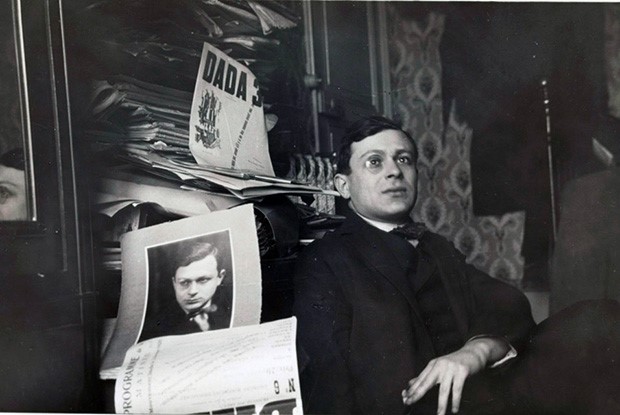
Dada leader Tristan Tzara
Naumann insists it is “now well known” in the literature on Dada that “Lenin was a frequent visitor to the Cabaret Voltaire, where he went to see if what was going on there could contribute to his political aspirations.” Actually, this notion is widely disputed in the literature. Huelsenbeck stated that Lenin once visited the Café Voltaire, and Marcel Janko later made a similar claim. The veracity of these accounts is, however, strongly doubted. Jones, for example, questions “the wistful reminiscing on Richard Huelsenbeck’s part to suggest that Lenin actually visited the Cabaret Voltaire; similarly, Marcel Janko’s distant and apocryphal retrospection of the cabaret room, thick with smoke, ‘where some sudden apparition would loom up every now and then, like the impressive Mongol features of Lenin.’”[5] Rappaport is similarly unconvinced, wondering if “the subversive nature of Dada as performance” was enough to arouse “Lenin’s curiosity enough to prompt him to cross the road and take a look.”[6] The official website of the city of Zurich is similarly skeptical, noting: “Whether Lenin visited the Cabaret Voltaire, the birthplace of Dadaism, is still unknown but has fueled speculation as to whether Lenin was a secret Dadaist.”
Naumann falsely alleges that I claim that Lenin influenced Dada and abstract art, and, correcting a point I don’t make, declares: “But in reality, Lenin had no effect whatsoever on Dada or abstract art. In fact, he and the other Bolsheviks were against abstract art, since its emphasis on individualism was diametrically opposed to Communist ideals.” The first statement is correct, but things are more complicated than Naumann’s second point would suggest. The new Soviet state led by Lenin that emerged after the Bolshevik Revolution of 1917 initially adopted a policy in favor of radical experimentation. As Christine Lindey notes:
Initially, most avant-garde artists welcomed the revolution because Lenin’s idea of a political avant-garde as an agent for social change legitimised their own calls for radical action to combat conservative attitudes to art and society. For Marxists like [the Russian painter Vladimir] Tatlin, here was an opportunity to make real and meaningful change. … Others, like Kandinsky, were not sympathetic to Bolshevik politics, but welcomed the artistic freedom which it brought, while aesthetically or/and politically conservative artists feared a loss of private patronage and critical status. Contrary to western propaganda, no artist was sent to the salt mines: Lenin and Lunacharsky, (Commissar of Enlightenment 1917–1929) pursued a pluralist arts policy.
With Stalin’s rise in power the avant-garde artists who flourished under Lenin were silenced. All avant-garde movements were forced out of the Soviet Union (or forced underground) until Stalin’s death in 1953. Locke observes that “Stalin squashed the entire evolution of avant-garde ingenuity in Russia and replaced it with his own brand of art, Soviet Realism.”
Naumann quibbles at the supposed chronological imprecision of my assertion that Hitler wrote Mein Kampf as Dada peaked in Paris. Hitler’s comments on Dada were written (or at least dictated to Rudolf Hess) in 1923 and Paris Dada was officially ended in 1924. Naumann insists that “Hitler knew virtually nothing about Dada, which he lumped together with Cubism and called an ‘artistic aberration.’” I make no assessment of Hitler’s knowledge of the movement in the essay besides quoting his brief statements about it in Mein Kampf. Naumann does make a single valid (though inconsequential) criticism: the American art collector Walter Arensberg is incorrectly identified as Jewish. This is something I will amend in future editions of Battle Lines.
In my essay I draw parallels between the ideas underpinning Dada and those of poststructuralist Jewish intellectual and founder of deconstruction, Jacques Derrida. Naumann takes issue with my description of Derrida as a “crypto-Jew intensely preoccupied with his own Jewish identity and the evils of European anti-Semitism.” He claims “By crypto-Jew, he implies that Derrida hid his Jewish identity.” Some basic research by Naumann would have revealed that my epithet is correct, and while Derrida posed as a leftist Parisian intellectual, a secularist and an atheist, he descended from a long line of crypto-Jews, and explicitly identified himself as such: “I am one of those marranes who no longer say they are Jews even in the secret of their own hearts.”[7]
Derrida was born into a Sephardic Jewish family that immigrated to Algeria from Spain in the nineteenth century. His family were crypto-Jews who retained their Jewish identity for 400 years in Spain during the period of the Inquisition. Derrida changed his first name to the French Christian sounding ‘Jacques’ in order better blend into the French scene. Furthermore, he took his crypto-Judaism to the grave:
When Derrida was buried, his elder brother, René, wore a tallit at the suburban French cemetery and recited the Kaddish to himself inwardly, since Jacques had asked for no public prayers. This discreet, highly personal, yet emotionally and spiritually meaningful approach to recognizing Derrida’s Judaism seems emblematic of this complex, imperfect, yet valuably nuanced thinker.
Derrida was a crypto-Jew until the end, even instructing his family to participate in the charade. Kevin MacDonald notes the obvious reason: “Intellectually one wonders how one could be a postmodernist and a committed Jew at the same time. Intellectual consistency would seem to require that all personal identifications be subjected to the same deconstructing logic, unless, of course, personal identity itself involves deep ambiguities, deception, and self-deception.”[8]
In his notebooks, Derrida underscores the centrality of Jewish issues in his writing: “Circumcision, that’s all I’ve ever talked about.” His experience of anti-Semitism during World War II in Algeria was traumatic and resulted in a deep consciousness of his own Jewishness. He was expelled from school at age 13 under the Vichy government because of official caps on the number of Jewish students, describing himself as a “little black and very Arab Jew who understood nothing about it, to whom no one ever gave the slightest reason, neither his parents nor his friends.”[9] Later, in France, his “suffering subsided. I naively thought that anti-Semitism had disappeared. … But during adolescence, it was the tragedy, it was present in everything else.” These experiences led Derrida to develop “an exhausting aptitude to detect signs of racism, in its most discreet configurations or its noisiest disavowals.”[10] Caputo notes how Jewish ethnic activism underpins Derrida’s deconstruction:
The idea behind deconstruction is to deconstruct the workings of strong nation-states with powerful immigration policies, to deconstruct the rhetoric of nationalism, the politics of place, the metaphysics of native land and native tongue. … The idea is to disarm the bombs… of identity that nation-states build to defend themselves against the stranger, against Jews and Arabs and immigrants, … all of whom… are wholly other. Contrary to the claims of Derrida’s more careless critics, the passion of deconstruction is deeply political, for deconstruction is a relentless, if sometimes indirect, discourse on democracy, on a democracy to come. Derrida’s democracy is a radically pluralistic polity that resists the terror of an organic, ethnic, spiritual unity, of the natural, native bonds of the nation (natus, natio), which grind to dust everything that is not a kin of the ruling kind and genus (Geschlecht). He dreams of a nation without nationalist or nativist closure, of a community without identity, of a non-identical community that cannot say I or we, for, after all, the very idea of a community is to fortify (munis, muneris) ourselves in common against the other. His work is driven by a sense of the consummate danger of an identitarian community, of the spirit of the “we” of “Christian Europe,” or of a “Christian politics,” lethal compounds that spell death of Arabs and Jews, for Africans and Asians, for anything other. The heaving and sighing of this Christian European spirit is a lethal air for Jews and Arabs, for all les juifs [i.e., Jews as prototypical others], even if they go back to father Abraham, a way of gassing them according to both the letter and the spirit.[11]
Derrida’s sociological preoccupations (and suggested solutions) replicated those of Tristan Tzara. Sandqvist links Tzara’s profound revolt against European social constraints directly to his Jewish identity, and his anger at the persistence of anti-Semitism. For Sandqvist, the treatment of Jews in Romania fueled the Dada leader’s revolt against Western civilization. Bodenheimer notes that:
As a Jew, Tzara had many reasons to call into question the so-called disastrous truths and rationalizations of European thinking, one result of which was the First World War — with the discrimination of Jews for centuries being another. … He came from a background in which jingoistic and anti-Semitic arguments had long reproached Jews for using impure, falsified language, from early examples in the sixteenth century … all the way to the arguments of the Romanian intellectuals in Tzara’s time, who attacked Jews as “foreigners” importing “diseased ideas” into Romanian literature and culture.
[Tzara consequently] seeks to unmask language itself as a construction that draws its value, and sometimes its claim to superiority, from an equally constructed concept of identities and values. In themselves, all languages are equal, but equal in their differences. This claim to the right of equality while upholding difference is the basic Jewish claim to a secular society. But the European peoples, be it first for religious or later for nationalist reasons, have never managed to actually understand this right, let alone grant it to minority societies.
Both the Dadaists and Derrida attacked the notion that the world really is as our concepts describe it (i.e., philosophical realism), and used nominalism (the view that concepts are nothing more than human artifacts that have no relation to the real world) to deconstruct and subvert Western realism. Both thought the idea of objective truth was dangerous because of the possibility that truth could be deployed against the “other.” For the Dadaists, the principles of Western rationality “were held to be highly problematic, because of its instrumental connections to social repressions and domination.”[12] The Jewish Dadaist Hans Richter declared that the abstract language of the Dadaists would be “beyond all national language frontiers,” and saw in Dadaist abstraction a new kind of communication “free from all kinds of nationalistic alliances.”[13] Like the Dadaists, Derrida decided, if you dislike the prevailing power, then strive to ruin its concepts. Dada used nonsense and absurdity to achieve this goal, while Derrida developed and deployed his methodology of deconstruction.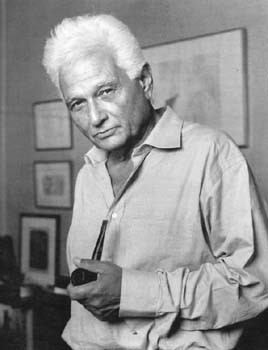
Jacques Derrida
When the Frankfurt School established itself in the United States, it made a conscious effort to give its Jewish intellectual activism a “scientific” veneer by gathering “empirical data” (such as that which formed the basis for The Authoritarian Personality) in order to challenge existing ideas seen as inimical to Jewish interests (such as Darwinian anthropology). Derrida and the poststructuralists instead sought (like the Jews within Dada) to discredit threatening ideas by undermining the notion of objective truth that underpinned all Western knowledge production.
Despite the difference of critical approach, a common Jewish ethno-political thread runs through Tzara’s Dada, Derrida’s deconstruction, and the Critical Theory of the Frankfurt School. Each attempted to foster subjective individualism to disconnect the masses from their familial, religious and ethnic bonds in order to lessen the prevalence of anti-Semitism in Western societies. Like the other movements chronicled by Kevin MacDonald in Culture of Critique, these movements were preoccupied with undermining the evolutionarily adaptive precepts and practices that had historically dominated Western societies (e.g., social homogeneity via immigration control, the nuclear family based on ties of love and affection, ethnocentrism, the drawing of clear ingroup and outgroup distinctions, sexual restraint), with the implicit goal being to render White Europeans less effective competitors to Jews for access to resources and reproductive success and less able to develop a cohesive, ethnically homogeneous movement in opposition to Judaism.
I am far from alone in noting the conceptual parallels between Dada and Derrida’s deconstruction. Wicks observes how strongly Dada resonates “with the definitively poststructuralist conception of deconstruction advanced by Jacques Derrida in the 1960s.”[14] Pegrum likewise notes the “strong link between Dada and postmodern artistic theory, the most obvious point of contact being with the work of Derrida.”[15] The literary critic Frank Kermode also traces deconstruction back to Dada influences, while Richard Sheppard regards the poststructuralists “as more introverted, less politicized, and less carnivalesque descendants of their Dada daddies.”[16]
Yet, for Naumann, my thesis is just a “conspiracy theory.” But why wouldn’t Jews (as a highly ethnocentric group) use their high levels of intellectual and cultural influence to advance their group interests at the expense of a group they perceive as an immemorial and existential threat?
Switching attention to my essay on Mark Rothko and Abstract Expressionism, a key theme of which is this artist’s political radicalism and Jewish ethnocentrism (and that of his entire social milieu), Naumann asks: “If Jews were such great supporters of Communism in the 1940s—as both Sanderson and MacDonald posit (and to a certain degree they are right)—then why did they not support the efforts of Regionalist painters (Thomas Hart Benton, Grant Wood and John Steuart Curry) and the Social Realists (Ben Shahn, Diego Rivera)?” I address this point at length in my essay — which makes me wonder if he actually bothered to read it to the end. Jewish artists like Rothko regarded Regionalism as exactly the kind of American painting they most despised: scenic, provincial, anecdotal, and conservative. They associated rural America with nativism, anti-Semitism, nationalism, and fascism as well as with anti-intellectualism and provincialism.
Jewish gallery owners like Sam Kootz decried the “nationalist” art of the Regionalists and promoted the internationalist art of a rising generation of expressionist, surrealist and abstract artists. “America’s more important artists are consistently shying away from Regionalism and exploring the virtues of internationalism,” he commented in 1943. “This is the painting equivalent of our newly found political and social internationalism.”[17] Incensed by the awarding of an art prize to John Steuart Curry in 1942, Jewish abstract artist Barnett Newman denounced Regionialism as “isolationism” and as akin to National Socialism, declaring: “Isolationist painting, which they named the American Renaissance, is founded on politics and on an even worse aesthetic. Using the traditional chauvinism, isolationist brand of patriotism, and playing on the natural desire of American artists to have their own art, they succeeded in pushing across a false aesthetic that is inhibiting the production of any true art in this country. … Isolationism, we have learned by now, is Hitlerism.”[18]

The Homestead by John Steuart Curry
The hostility of Jewish artists and intellectuals to Regionalism is no great mystery. A subset of Jews did support the work of the Social Realists, but this changed with the failure of socialism to take hold in North America in the 1940s. As I explain in the essay:
For Jewish writer Alain Rogier, it seems “hardly a coincidence that Jews made up a large percentage of the leading Abstract Expressionists.”[19] It was an art movement where the culture of critique of Jewish artists, frustrated that the post-war American prosperity prevented the coming of international socialism, turned inward and instead “proposed individualistic modes of liberation.” This mirrored the ideological shift that occurred among the New York Intellectuals generally who “gradually evolved away from advocacy of socialist revolution toward a shared commitment to anti-nationalism and cosmopolitanism [i.e., the multicultural project], ‘a broad and inclusive culture’ in which cultural differences were esteemed.”[20] Doss notes how this ideological shift manifested itself among the artists who became the Abstract Expressionists:
As full employment returned, New Deal programs were terminated — including federal support for the arts — the reformist spirit that had flourished in the 1930s dissipated. Corporate liberalism triumphed: together, big government and big business forged a planned economy and engineered a new social contract based on free market expansion. … With New Deal dreams of reform in ruins, and the better “tomorrow” prophesied at the 1939–1940 New York World’s Fair having seemingly led only to the carnage of World War II, it is not surprising that post-war artists largely abandoned the art styles and political cultures associated with the Great Depression.[21]
The avant-garde artists of the New York School instead embraced an “inherently ambiguous and unresolved, an open-ended modern art … which encouraged liberation through personal, autonomous acts of expression.” The works of the Abstract Expressionists were “revolutionary attempts” to liberate the larger American culture “from the alienating conformity and pathological fears [especially of communism] that permeated the post-war era.”[22] Rothko claimed that “after the Holocaust and the Atom Bomb you couldn’t paint figures without mutilating them.” His friend and fellow artist Adolph Gottlieb, declared that: “Today when our aspirations have been reduced to a desperate attempt to escape from evil, and times are out of joint, our obsessive, subterranean and pictographic images are the expression of the neurosis which is our reality. To my mind … abstraction is not abstraction at all. … It is the realism of our time.”[23]
At the heart of Abstract Expressionism lay a vision of the artist as alienated from mainstream society, a figure morally compelled to create a new type of art which would confront an irrational, absurd world — a mentality completely in accord with that of the alienated Jewish artists and intellectuals at the heart of the movement who viewed the White Christian society around them with hostility. MacDonald notes that the New York Intellectuals “conceived themselves as alienated, marginalized figures — a modern version of traditional Jewish separateness and alienation from gentile culture. …” Norman Podhoretz was asked in the 1950s “whether there was a special typewriter at Partisan Review with the word ‘alienation’ on a single key.”[24]
During the 1950s, Jewish artists and intellectuals chafed against the social controls enforced by political conservatives and religious and cultural traditionalists who limited Jewish influence on the culture, “much to the chagrin of the Frankfurt School and the New York Intellectuals who prided themselves in their alienation from that very culture.” This all ended, together with Abstract Expressionism as an art movement embodying the alienation of the New York Intellectuals, with the triumph of the culture of critique in the 1960s, when Jews and their gentile allies usurped the old WASP establishment, and thus had far less reason to engage in the types of cultural criticism so apparent in the writings of the Frankfurt School and the New York Intellectuals. Hollywood and the rest of the American media were unleashed.
Naumann has no actual response to any of this. However, in assessing the Jewish domination of Abstract Expressionism, he claims that I envision “the whole enterprise as nothing short of a Jewish conspiracy, whereby Jews placed themselves in a position to be viewed by the intellectual establishment of the time as ‘self-appointed gatekeepers of Western culture.’” A major theme of my essay on Rothko and Abstract Expressionism is the power of Jewish ethnic networking and nepotism — which is abundantly demonstrated in Mark Rothko’s rise to fame on the New York art scene. Rothko biographer Annie Cohen-Solal emphasizes the role of Jewish ethnic networking in Rothko’s rise from obscurity to artistic celebrity. More broadly, Jewish artists (Rothko, Adolph Gottlieb, Barnett Newman), critics (Harold Rosenberg, Clement Greenberg, Thomas B. Hess), curators (Katherine Kuh, Peter Selz, Henry Geldzahler) and art dealers (Sidney Janis, Peggy Guggenheim, Samuel Kootz), were instrumental in the rise of Abstract Expressionism. Such an overwhelming representation from a group that comprised less than two percent of the American population is utterly remarkable and testament to the power of Jewish ethnic networking and nepotism.
Naumann falsely claims I “invent” a Jewish connection to the non-Jewish artist Willem de Kooning when I note that he had to ingratiate himself with the Jewish critics and intellectuals clustered around the leftist journal Partisan Review. It was hardly necessary for me to “invent” a connection between de Kooning and Jews. His wife, Elaine de Kooning, was half-Jewish (born Elaine Fried), and de Kooning shamelessly pimped her out to leading Jewish art critics like Harold Rosenberg and Thomas B. Hess, who, in return, helped further his career.[25] Hess, the editor of Art News, the oldest and most widely-circulated fine arts journal in the world, was hugely influential in promoting Abstract Expressionism. Mentored and promoted by the magazine’s editor in chief, Alfred Frankfurter (also Jewish), Hess was part of the triumvirate of Jews (with Clement Greenberg and Harold Rosenberg) who “were instrumental in championing Abstract Expressionism in the early stages of the movement.” Hess’s Abstract Painting: Background and American Phase (1951) was the first book on the movement to be published, and the critic and art historian Barbara E. Rose (also Jewish) described him as running a “propaganda vehicle for launching the New York School internationally.” While Hess’s Wikipedia entry doesn’t mention his ethnic background, a quick internet search reveals that his mother was buried at the Mount Zion Temple Cemetery in Minnesota.
Naumann claims that in pointing out the prominence of Jews in the art world I give “proof of how important and influential Jews were in shaping the culture of our times. If you were to remove the names of everyone who was Jewish from the roster of twentieth-century artists, writers, critics, collectors, and art dealers, you would find that very little of that history would exist.” Indeed.
He claims to be deeply offended by my custom of placing the word “Holocaust” in quotation marks – which I do to highlight the absurdity (not to say impossibility) of much of the official narrative, and also to protest its use as a tool of psychological warfare against White people. Naumann insists that, rather than Jews engaging in competitive victimhood (as I discuss in a recent article), it is “Sanderson and MacDonald [who] envision themselves as the ultimate victims … since they have found themselves ostracized from mainstream academia.” In all of the writing I have done for The Occidental Observer going back over a decade I have never described or presented myself as a victim.
Naumann concludes his review in the same vein in which he starts it — eschewing rational arguments in favor of baseless speculation about the mental health of yours truly and Professor MacDonald: “It does not take a trained psychiatrist to determine that the biased and racist rants of most white supremacists are the product of an innate psychiatric disorder, one that causes them to hate all people who are not like them.” Naumann’s total reliance on these kind of personal attacks reminds one of how little things have changed since the nineteenth century when Richard Wagner was declared to be suffering from a psychiatric disorder for daring to criticize Jewish influence. No doubt Naumann would lump Wagner in with his “many notable psychotics in history” whose criticisms of Jews he attributes to psychopathology. In the final analysis, none of this name-calling amounts to actual arguments, and only serves to highlight the weakness of his position.
Brenton Sanderson is the author of Battle Lines: Essays on Western Culture, Jewish Influence and Anti-Semitism, banned by Amazon, but available here.
[1] Irina Livezeanu, “From Dada to Gaga: The Peripatetic Romanian Avant-Garde Confronts Communism,” Mihai Dinu Gheorghiu & Lucia Dragomir (Eds.), Littératures et pouvoir symbolique (Bucharest: Paralela 45, 2005), 245-6.
[2] Bernard Blisténe, A History of Twentieth Century Art (Paris: Fammarion, 2001), 62.
[3] Dawn Ades, “Dada and Surrealism,” David Britt (Ed.) Modern Art – Impressionism to Post-Modernism, (London, Thames & Hudson, 1974), 222.
[4] Robert Short, Dada and Surrealism (London: Laurence King Publishing, 1994), 42.
[5] Daffyd Jones, Dada 1916 in Theory: Practices of Critical Resistance (Liverpool University Press, 2014), 176.
[6] Helen Rappaport, Conspirator: Lenin in Exile (Basic Books; 2012), 256.
[7] Jacques Derrida, “Circumfession,” In Jacques Derrida, Ed. G. Bennington & Jacques Derrida, Trans. G. Bennington (Chicago: University of Chicago Press, 1993), 170.
[8] Kevin MacDonald, The Culture of Critique: An Evolutionary Analysis of Jewish Involvement in Twentieth‑Century Intellectual and Political Movements (Bloomington, IN: 1stbooks Library, 2001), 198.
[9] Derrida, “Circumfession,” op. cit., 58)
[10] Jacques Derrida, Points… Interviews, 1974-1994, Trans. P. Kamuf et al (Palo Alto, CA: Stanford University Press, 1995), 120–21.
[11] J.D. Caputo, The Prayers and Tears of Jacques Derrida: Religion without Religion (Bloomington: University of Indiana Press, 1997), 231–2.
[12] Matthew Biro, The Dada Cyborg: Visions of the New Human in Weimar Berlin, (Minnesota: University of Minnesota Press, 2009), 154.
[13] Hockensmith, “Artists’ Biographies,” Leah Dickerman (Ed.) Dada (Washington D.C., National Gallery of Art, 2005), 482.
[14] Robert J. Wicks, Modern French Philosophy: From Existentialism to Postmodernism (Oxford: Oneworld, 2007), 11.
[15] Mark A. Pegrum, Challenging Modernity: Dada between Modern and Postmodern (New York: Berghahn Books, 2000), 269.
[16] Richard Sheppard, Modernism-Dada-Postmodernism (Evanston, Northwestern University Press, 1999), 365.
[17] Annie Cohen-Solal, Mark Rothko, Toward the Light in the Chapel (New Haven CT: Yale University Press, 2015), 90.
[18] Ibid., 88.
[19] Alain Rogier, “Jewish Artist Mark Rothko: An Outsider in Life and Death,” ReformJudaism.org, April 26, 2016. https://reformjudaism.org/blog/2016/04/26/jewish-artist-mark-rothko-outsider-life-and-death
[20] Ibid., 212.
[21] Erika Doss, Twentieth-Century American Art (Oxford: Oxford University Press, 2002), 124.
[22] Ibid., 130-1.
[23] Doss, Twentieth-Century American Art, 128.
[24] MacDonald, Culture of Critique, 212.
[25] See: Lee Hall, Elaine and Bill: Portrait of a Marriage (HarperCollins, 1993).

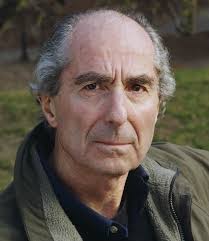
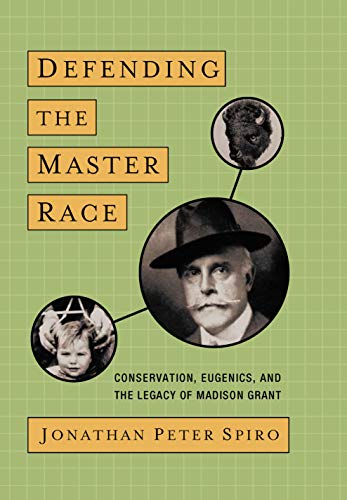
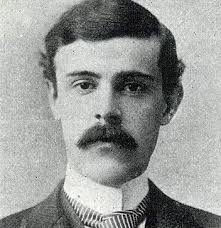
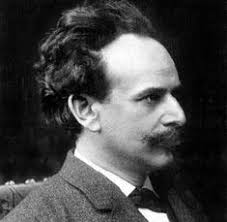








 Salvador Dalí. “The Persistence of Memory” (1931)
Salvador Dalí. “The Persistence of Memory” (1931)
